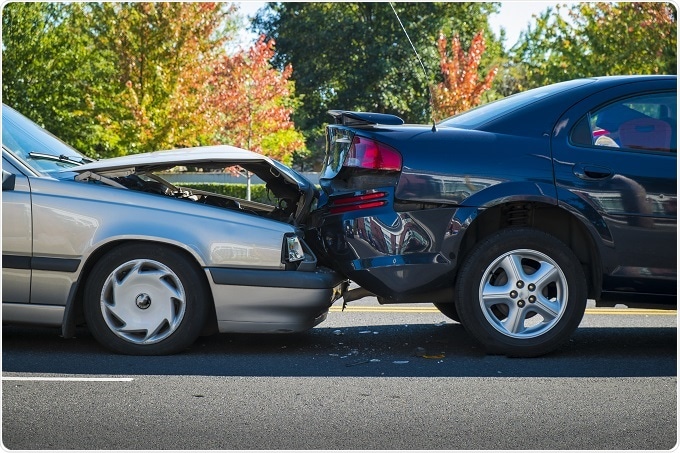May 16 2017
A new report from the World Health Organization (WHO) and partners find that adolescent deaths amount to more than 3000 a day, which totals to 1.2 million deaths annually that are mostly from preventable or treatable causes. In low- and middle-income countries of the African and Southeast Asian regions, 855, 000 adolescents in the age group of 10–19-years old died in the year 2015. Road traffic injuries being the leading cause of death, and other major causes of deaths in adolescent are due to lower respiratory infections and suicide.
 Credit: Robert Crum / Shutterstock.com
Credit: Robert Crum / Shutterstock.com
With good health services, education, and support from society, most of these deaths can be prevented. Yet in many cases, adolescents suffering from mental health disorders, drug use disorder, or poor nutritional diet, cannot get significant prevention and care services either because they are unaware of them or the services do not exist.
Additionally, many behaviors that begin in adolescence have an impact on physical inactivity, diet choices and risky sexual health behaviors in later life.
"Adolescents have been entirely absent from national health plans for decades," says Dr Flavia Bustreo, Assistant Director-General, WHO. "Relatively small investments focused on adolescents now will not only result in healthy and empowered adults who thrive and contribute positively to their communities, but it will also result in healthier future generations, yielding enourmous returns."
The report Global Accelerated Action for the Health of Adolescents (AA-HA!): Guidance to Support Country Implementation has revealed stark differences in the data when separating the causes of death for younger adolescents in the age group of 10–14 years and older adolescents in the age group of 15–19 years and by sexual category. Interventions ranging from seat-belt laws to comprehensive sexuality education that countries can take for improving the health and well being of the adolescents that will cut the unnecessary deaths significantly, are included in the report.
Road injuries: Top cause of adolescent deaths, affecting boys excessively
The leading cause of death in the 10–19-year old adolescent group was road injuries. Approximately 115,000 adolescents (88,590 boys and 26,712 girls) died in the year 2015, out of which older adolescent boys in the age group of 15–19 years faced the greatest trouble. Most of the adolescents killed in the road accidents are likely to be road users such as pedestrians, cyclists, and motorcyclists.
Yet the differences between the regions are striking. In Africa, when looking at low- and middle-income countries, the bigger causes of adolescent deaths are communicable diseases such as HIV/AIDS, lower respiratory infections, and meningitis, compared with road injuries.
Among the age group of 10–19 years, 42,277 boys died due to interpersonal violence and 40,847 boys died (out of 57,125 deaths) due to drowning.
Lower respiratory infections and pregnancy complications affect adolescent girls
The picture for girls differs significantly from the boys. Out of 72,655 deaths in the year 2015, 36,637 are girls and 36 018 are boys in the age group of 10–19 years. Cooking with dirty fuels leads to indoor air pollution and consequently younger adolescent girls in the age group of 10–14 suffer from lower respiratory infections (such as pneumonia), a leading cause of death. The top cause for death among older adolescent girls in the age group of 15–19 years is pregnancy complications such as hemorrhage, sepsis, obstructed labor, and complications from abortions that are not safe.
Among the age group of 10–19-year old adolescents, 63575 deaths are due to diarrheal diseases (32 194 deaths in girls) in the year 2015.
Threat to self-harm and suicide among adolescents
The third cause of adolescent mortality, suicide, and accidental death from self-harm resulted in the death of 67,149 (34,650 boys and 32,499 girls) in the year 2015. Cropping up among older adolescents, self-harm is the leading or second cause of adolescent death in Europe and Southeast Asia, particularly in older adolescent girls across the globe.
A vulnerable population in humanitarian
The health of adolescents needs to be intensified in humanitarian and fragile settings. The younger population often bears the responsibilities of adults such as working or caring for siblings, compelling them to drop out of school, early marriages (28,886 girls in the age group 10–19 died in the year 2015 due to maternal conditions), or engaging in transactional sex for meeting the basic survival needs. Consequently, they suffer poor nutrition, unintentional injuries, early pregnancies, diarrheal diseases, sexual violence, diseases that are transmitted through sexual activities, and issues of mental health.
Involvement to improve adolescent health
"Improving the way health systems serve adolescents is just one part of improving their health," says Dr Anthony Costello, Director, Maternal, Newborn, Child and Adolescent Health, WHO. "Parents, families and communities are extremely important, as they have the greatest potential to positively influence adolescent behaviour and health."
The AA-HA! Guidance suggests involvement across sectors, including comprehensive sex education in schools, rising age limits for consuming alcohol, mandating seat-belts and helmets through laws, reduced access to and misuse of firearms, using cleaner fuels for cooking and reducing indoor air pollution, increasing access to sanitation, and hygiene and water that is safe. The report also explains in detail how countries can deliver these interventions with health programs for adolescents.